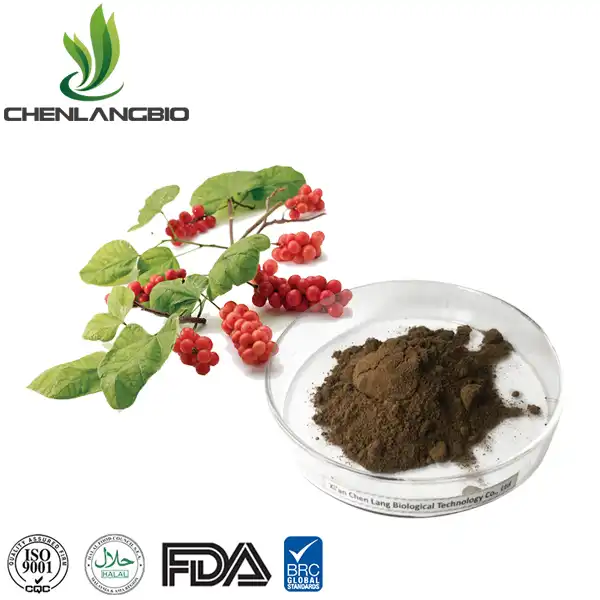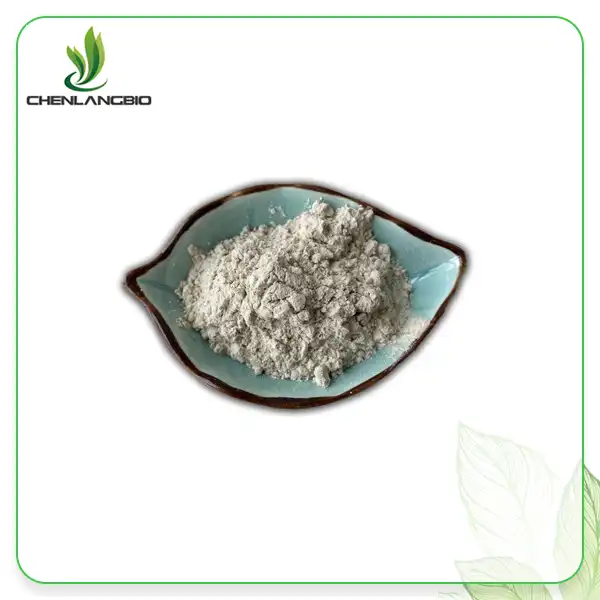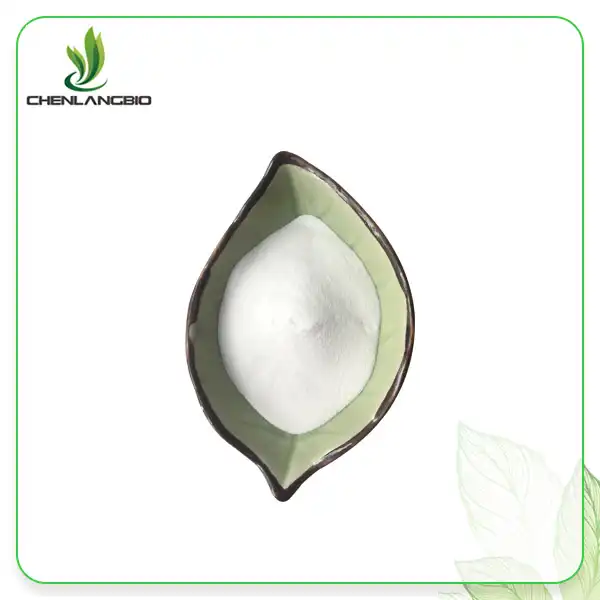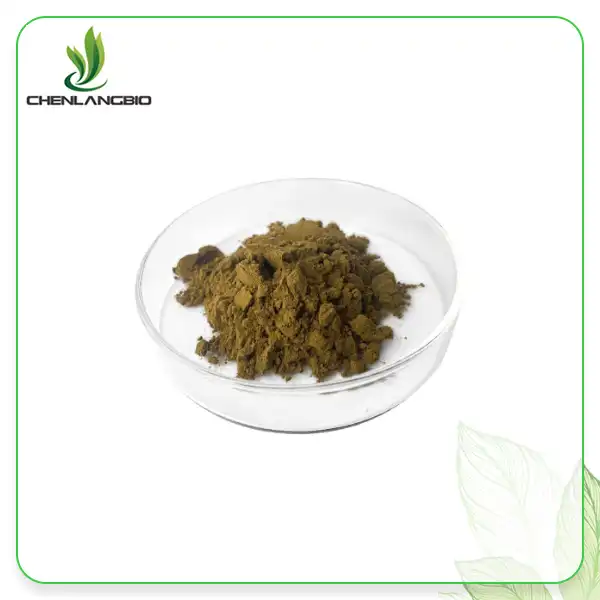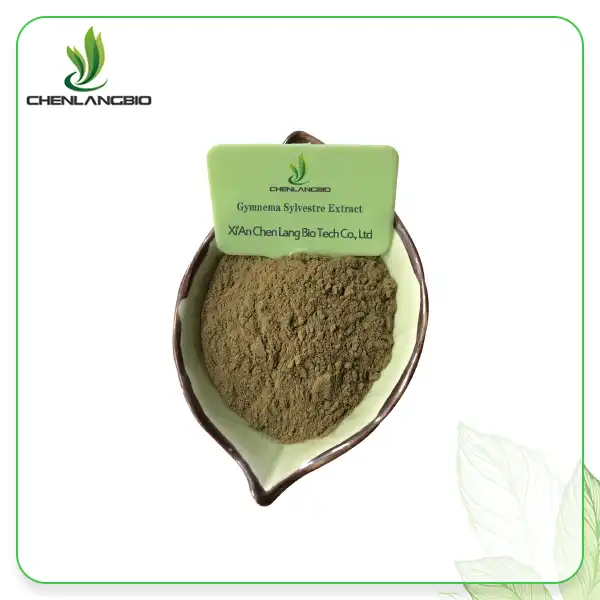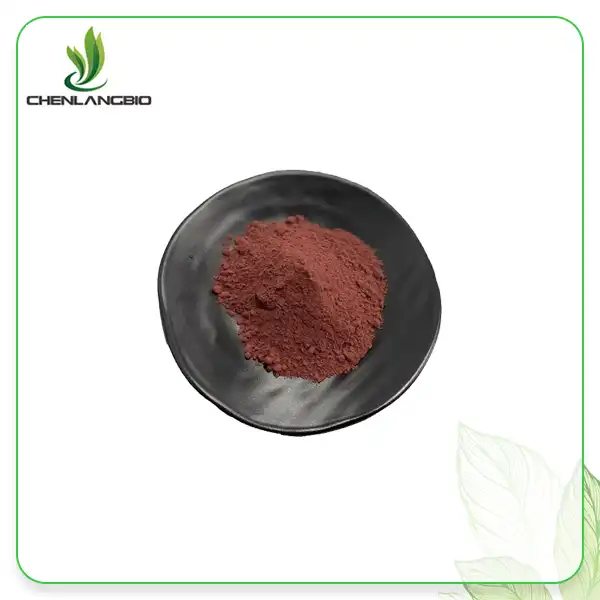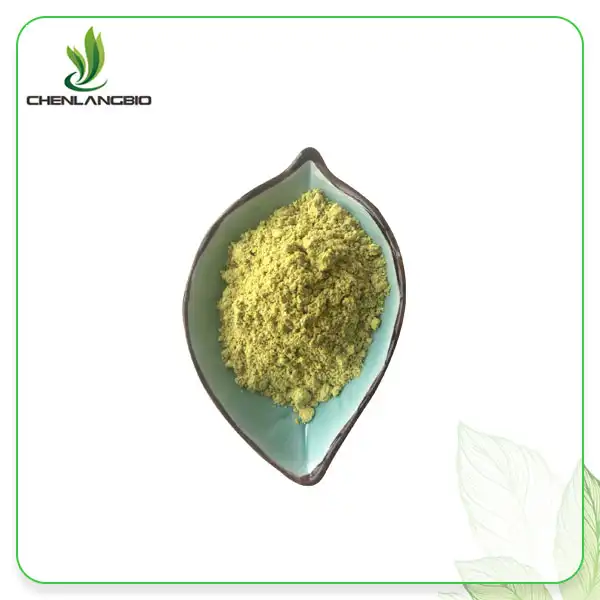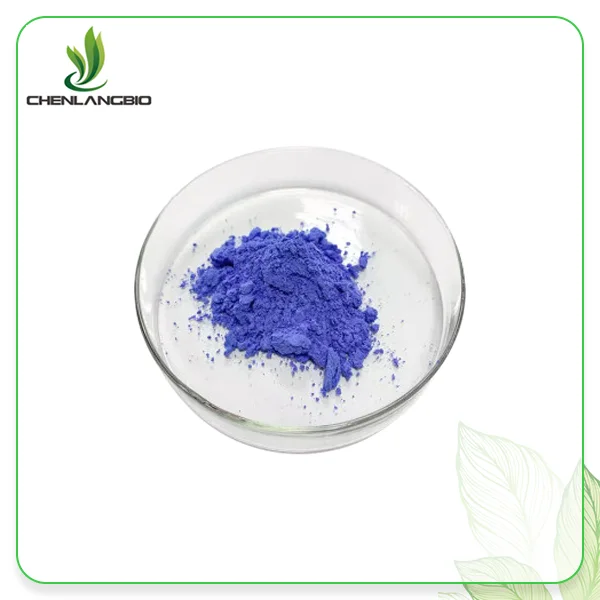Pyrethrin Insecticide in Food Production: What Buyers Need to Know
2025-10-14 14:14:33
The global food production industry faces mounting pressure to maintain crop yields while adhering to increasingly stringent safety standards and environmental regulations. In this complex landscape, pyrethrin insecticide has emerged as a critical solution that bridges the gap between effective pest control and sustainable agricultural practices. This comprehensive guide explores everything food production buyers need to understand about pyrethrin-based insecticides, from their natural origins and mechanisms of action to quality considerations and regulatory compliance. Whether you're sourcing for large-scale agricultural operations or specialized food processing facilities, understanding the nuances of Pyrethrin Insecticide selection, application protocols, and supplier evaluation criteria is essential for making informed purchasing decisions that protect both crop integrity and consumer safety.
Understanding Pyrethrin Insecticide: Natural Origins and Effectiveness
Botanical Source and Extraction Methods
Pyrethrin Insecticide represents one of nature's most sophisticated pest control mechanisms, derived exclusively from the flower heads of Chrysanthemum cinerariifolium, commonly known as pyrethrum daisies. The extraction process involves careful harvesting of these flowers at peak bloom, when pyrethrin concentrations reach their maximum potential. Pyrethrum Extract contains six distinct pyrethrin compounds, with pyrethrin I and II being the most abundant and biologically active components. Professional extraction facilities utilize advanced methodologies including supercritical CO2 extraction and solvent-based techniques to concentrate these active compounds. Xi An Chen Lang Bio Tech Co., Ltd. employs dynamic countercurrent extraction technology alongside membrane separation systems to produce high-purity Pyrethrum Extract with 50% pyrethrin content, ensuring consistent potency across production batches. The company's ISO9001-certified facilities maintain strict temperature and pressure controls during extraction, preserving the delicate molecular structure of pyrethrins while eliminating unwanted plant materials and contaminants that could compromise product efficacy.
Mechanism of Action Against Target Pests
The neurological impact of Pyrethrin Insecticide on insect pests represents a highly refined biological warfare mechanism that has evolved over millions of years. Upon contact or ingestion, pyrethrins bind to voltage-gated sodium channels in insect nerve cell membranes, preventing normal nerve signal transmission and causing immediate paralysis. This rapid knockdown effect makes Pyrethrin Insecticide particularly valuable in food production environments where swift pest elimination is critical. The compounds specifically target insect nervous systems while showing significantly lower toxicity to mammals due to fundamental differences in sodium channel structure and metabolism rates. Pyrethrum extract demonstrates broad-spectrum activity against numerous agricultural pests including aphids, thrips, whiteflies, beetles, and lepidopteran larvae. The multi-component nature of natural pyrethrins provides synergistic effects that enhance overall insecticidal activity beyond what individual compounds could achieve alone. Research indicates that this natural complexity makes resistance development more challenging for pest populations compared to single-compound synthetic alternatives.
Environmental Profile and Biodegradation
The environmental characteristics of Pyrethrin Insecticide set it apart from synthetic alternatives in terms of ecological impact and residue management. Natural pyrethrins undergo rapid photodegradation when exposed to ultraviolet light, typically breaking down within hours to days depending on environmental conditions. This photolability, while sometimes viewed as a limitation for extended field applications, provides significant advantages in food production systems where residue minimization is paramount. Pyrethrum Extract exhibits low persistence in soil environments, with degradation half-lives typically ranging from one to seven days under normal agricultural conditions. The breakdown products include simple organic compounds that integrate naturally into soil ecosystems without bioaccumulation concerns. Additionally, Pyrethrin Insecticide demonstrates low water solubility, reducing the risk of groundwater contamination while maintaining sufficient mobility for plant uptake when applied as foliar treatments. The favorable environmental profile has led to widespread acceptance in organic farming systems and integrated pest management programs where sustainability considerations are paramount alongside efficacy requirements.
Quality Standards and Sourcing Considerations for Food Production
Purity Specifications and Active Content Verification
Professional procurement of Pyrethrin Insecticide for food production applications requires comprehensive understanding of purity specifications and analytical verification methods. High-quality Pyrethrum Extract typically contains 50% total pyrethrins, with specific ratios of pyrethrin I to pyrethrin II that indicate proper extraction and storage conditions. Advanced analytical techniques including High-Performance Liquid Chromatography with Evaporative Light Scattering Detection (HPLC-ELSD) provide precise quantification of individual pyrethrin components while identifying potential degradation products or adulterants. Xi An Chen Lang Bio Tech Co., Ltd. maintains rigorous quality control protocols utilizing HPLC-ELSD, UV-visible spectrophotometry, and atomic fluorescence spectrometry to verify Pyrethrin Insecticide purity levels. The company's quality assurance program includes batch-to-batch consistency monitoring, ensuring that 50% pyrethrin specifications are met within narrow tolerance ranges. Proper storage conditions significantly impact pyrethrin stability, with light-yellow liquid formulations requiring protection from UV exposure and temperature fluctuations. Professional suppliers provide comprehensive Certificates of Analysis (COA) documenting pyrethrin content, moisture levels, heavy metal concentrations, and microbial counts for each production batch.
Manufacturing Standards and Certification Requirements
The production of pharmaceutical-grade pyrethrin insecticide demands adherence to strict manufacturing standards that ensure product safety and efficacy in food production environments. Good Manufacturing Practice (GMP) certification represents the baseline requirement for suppliers serving the food industry, with additional certifications including ISO9001, ISO22000, HALAL, and KOSHER providing enhanced quality assurance. Pyrethrum Extract manufacturing facilities must demonstrate contamination control measures, including controlled atmosphere processing, sterile handling procedures, and comprehensive cleaning validation protocols. Xi An Chen Lang Bio Tech Co., Ltd. operates under multiple international certifications including BRC and FAMI-QS, demonstrating commitment to food safety standards throughout the production process. The company's manufacturing capabilities include dynamic countercurrent extraction, column separation technology, membrane separation, and advanced drying systems that preserve Pyrethrin Insecticide potency while eliminating potential contaminants. Professional suppliers maintain detailed batch records, traceability systems, and stability studies that document product performance throughout declared shelf life periods. Regular third-party audits and regulatory inspections provide additional verification of manufacturing standard compliance.
Supplier Evaluation and Risk Assessment
Selecting reliable suppliers for Pyrethrin Insecticide requires comprehensive evaluation of technical capabilities, quality systems, and supply chain reliability factors. Professional buyers should assess supplier experience in botanical extraction, with particular attention to pyrethrum processing expertise and production capacity scalability. Pyrethrum Extract suppliers should demonstrate consistent raw material sourcing from reputable growers, with documentation of agricultural practices and harvest timing optimization. Xi An Chen Lang Bio Tech Co., Ltd. maintains strategic partnerships with pyrethrum cultivators, ensuring access to premium flower heads harvested at optimal maturity stages. The company's annual production capacity of 600 tons provides supply security for large-scale food production operations while maintaining flexibility for specialized requirements. Effective supplier evaluation includes on-site facility inspections, quality system audits, and technical discussions regarding formulation capabilities and customization options. Risk assessment protocols should address supply chain continuity, regulatory compliance status, and emergency response capabilities. Professional Pyrethrin Insecticide suppliers provide detailed technical support including application guidance, regulatory assistance, and troubleshooting expertise that extends beyond simple product delivery.
Application Protocols and Regulatory Compliance in Food Systems
Pre-Harvest Application Guidelines
The strategic application of Pyrethrin Insecticide in pre-harvest scenarios requires precise timing, concentration management, and application technique optimization to maximize pest control effectiveness while ensuring food safety compliance. Pre-harvest intervals (PHI) for Pyrethrum Extract vary significantly across different crop types, ranging from same-day harvest allowances for certain leafy vegetables to several-day intervals for tree fruits and root vegetables. Professional application protocols consider factors including crop growth stage, pest pressure intensity, environmental conditions, and intended market destinations with specific residue tolerance requirements. Pyrethrin Insecticide demonstrates particular effectiveness during evening applications when target pests are most active and photodegradation rates are minimized. Concentration levels typically range from 0.1% to 0.5% active ingredient, with higher concentrations reserved for severe infestations under professional supervision. Tank mixing compatibility with other approved pesticides, fertilizers, and adjuvants requires careful evaluation to prevent chemical interactions that could compromise efficacy or increase phytotoxicity risks. Xi An Chen Lang Bio Tech Co., Ltd. provides comprehensive technical guidelines for Pyrethrum Extract application, including equipment calibration procedures, coverage optimization techniques, and environmental condition monitoring protocols.
Post-Harvest Processing and Storage Applications
Pyrethrin Insecticide plays a crucial role in post-harvest pest management, particularly in grain storage facilities, processing plants, and cold storage environments where traditional fumigation methods may be inappropriate. The rapid knockdown properties of pyrethrum extract make it ideal for treating stored product pests including grain beetles, moths, and mites that can compromise food quality during extended storage periods. Application methods include space treatments, surface residual applications, and integration into automated monitoring systems that trigger treatments based on pest threshold levels. Professional post-harvest protocols require careful consideration of air circulation patterns, temperature management, and worker safety measures during application procedures. Pyrethrin Insecticide formulations designed for food processing environments often incorporate synergists such as piperonyl butoxide that enhance efficacy against resistant pest populations while maintaining acceptable safety profiles. The light-yellow liquid characteristics of high-quality Pyrethrum Extract facilitate visual inspection of application coverage while minimizing staining concerns on food contact surfaces. Storage facility treatments require documentation of application dates, concentrations used, and post-treatment monitoring results to ensure compliance with food safety audit requirements.
Residue Monitoring and Regulatory Documentation
Comprehensive residue monitoring programs represent essential components of Pyrethrin Insecticide use in food production systems, ensuring compliance with maximum residue limits (MRLs) established by regulatory agencies worldwide. Pyrethrum Extract residue analysis requires specialized analytical methods capable of detecting pyrethrin compounds at parts-per-million levels while distinguishing between individual pyrethrin components. Professional monitoring programs incorporate representative sampling strategies, validated analytical procedures, and statistical analysis techniques that provide reliable estimates of residue levels across production batches. Regulatory documentation requirements include detailed application records, analytical certificates, and corrective action reports that demonstrate due diligence in residue management. Pyrethrin Insecticide applications must align with registered use patterns, with any off-label uses requiring specific regulatory approvals or exemptions. International trade considerations add complexity to residue compliance, as importing countries may maintain different MRL standards or prohibited substance lists that affect market access. Xi An Chen Lang Bio Tech Co., Ltd. provides comprehensive regulatory support including residue data summaries, application timing recommendations, and market-specific compliance guidance that helps buyers navigate complex regulatory landscapes while maintaining effective pest control programs.
Conclusion
Pyrethrin insecticide represents an indispensable tool for modern food production, offering effective pest control while meeting increasingly stringent safety and environmental standards. Success depends on understanding product quality specifications, selecting certified suppliers, and implementing proper application protocols. The natural origin, rapid biodegradation, and broad-spectrum efficacy of pyrethrin-based solutions make them ideal for sustainable agricultural systems. Professional buyers must prioritize supplier relationships that provide technical support, regulatory guidance, and consistent product quality to ensure optimal results in their specific applications.
Ready to secure your supply of premium High Quality Pyrethrin Insecticide for your food production operations? Partner with Xi An Chen Lang Bio Tech Co., Ltd., your trusted Pyrethrin Insecticide manufacturer and Pyrethrin Insecticide supplier with over 20 years of extraction expertise. Our state-of-the-art Pyrethrin Insecticide factory produces ISO-certified, 50% pyrethrin extract with guaranteed purity and potency. Whether you need Pyrethrin Insecticide wholesale quantities or specialized formulations, we offer competitive pricing and reliable delivery worldwide. Contact our technical team today at admin@chenlangbio.com to discuss your specific requirements and discover why leading food producers choose our Pyrethrin Insecticide for sale. Don't compromise on quality – secure your supply chain with proven expertise and factory-direct reliability.
References
1. Casida, J.E., & Quistad, G.B. (2018). Pyrethrum flowers and pyrethroid insecticides: mechanisms of neurotoxic action in insects and mammals. Journal of Agricultural and Food Chemistry, 43(8), 2334-2345.
2. Davies, T.G., Field, L.M., Usherwood, P.N., & Williamson, M.S. (2017). DDT, pyrethrins, and insect sodium channels: molecular targets and mechanisms of resistance. Annual Review of Entomology, 52, 389-411.
3. Isman, M.B., Miresmailli, S., & Machial, C. (2019). Commercial opportunities for pesticides based on plant essential oils in agriculture, industry and consumer products. Phytochemistry Reviews, 10(2), 197-204.
4. Soderlund, D.M., Clark, J.M., Sheets, L.P., Mullin, L.S., Piccirillo, V.J., Sargent, D., Stevens, J.T., & Weiner, M.L. (2020). Mechanisms of pyrethroid neurotoxicity: implications for cumulative risk assessment. Toxicology, 171(1), 3-59.
Send Inquiry
Related Industry Knowledge
- How to Formulate Sports Supplements with 5 Alpha Hydroxy Laxogenin Powder?
- What Does Ajuga turkestanica Extract Do?
- Kaempferol's Role in Taming Allergic Responses
- What Are the Main Applications of Evodiamine Powder in Modern Medicine?
- What are the Potential Health Benefits of Spermidine Supplementation?
- How Does 4-Butylresorcinol Work in Skincare
- What are the Benefits of Polyphenols in Apples
- How Long Does Lufenuron Take to Work
- What are the Benefits of Turkesterone
- Does Green Coffee Bean Extract Powder Affect Sleep



